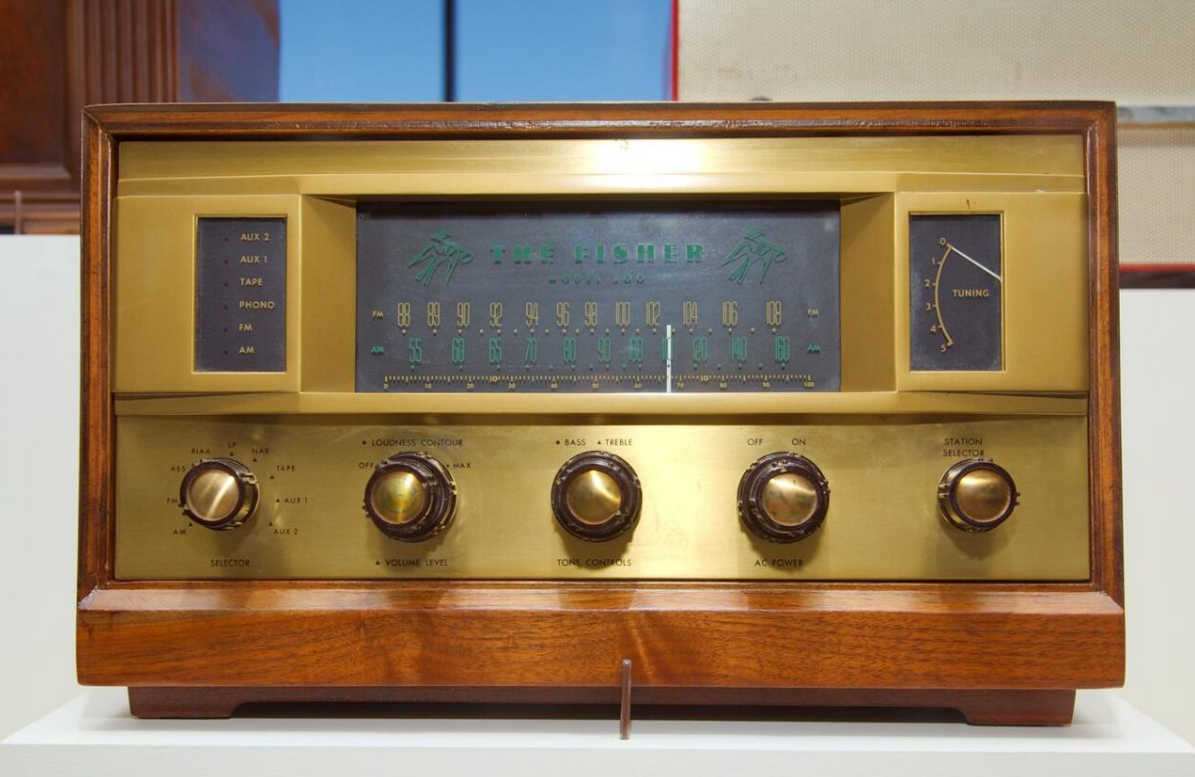
| Version | Summary | Created by | Modification | Content Size | Created at | Operation |
|---|---|---|---|---|---|---|
| 1 | Amina Yu | -- | 824 | 2022-12-30 07:17:10 |
Video Upload Options
1. Introduction
Avery Robert Fisher (March 4, 1906 – February 26, 1994) was an amateur violinist, pioneer in the field of sound reproduction, and founder of once prestigious Fisher Electronics. He served on the board for Lincoln Center for the Performing Arts, the New York Philharmonic, Chamber Music Society of Lincoln Center, and the Marlboro Festival. He also established the Avery Fisher Artist Program that includes the Avery Fisher Prize and Career Grants in 1974. Philharmonic Hall at Lincoln Center was named in his honor from 1973 until September 2015, when it was renamed David Geffen Hall.
2. Early Life
Avery Fisher was born in Brooklyn, New York. He attended DeWitt Clinton High School, graduated from New York University in 1929 and subsequently worked for two years in publishing. During this time, Fisher, an amateur violinist, began experimenting with audio design and acoustics. He wanted to make a radio that would sound like he was listening to a live orchestra—that would achieve high fidelity to the original sound. In 1937 he established his first company, Philharmonic Radio. In 1945, he sold the company and founded his second audio firm, Fisher Radio Company, which marketed high-performance audio products under the name The Fisher.[1]
3. Fisher Radio

With the invention of FM by Edwin Armstrong, Fisher's desire to have a radio and amplifying device that could meet the goal of high fidelity became a reality. By the 1950s, the term receiver was used instead of radio for a unit that combined a tuner and an amplifier, but lacked speakers. In 1957, the Fisher Radio Company produced their first high fidelity FM/AM receiver, the monophonic 14-tube Fisher 500 (TA500).
In 1958, H. H. Scott introduced the first true stereophonic receiver, which used a stereo multiplex decoder. Fisher followed with its $350, 22-tube, stereophonic 600 (TA600) receiver in 1959. (A multiplex option, the Fisher MPX-200, would add four more tubes)[2]
Between 1963 and 1964, Fisher introduced their first all-transistor stereophonic receiver, the Fisher 400T. Early transistor receivers were not highly regarded by hi-fi enthusiasts, so manufacturers such as Fisher moved gradually with the technological advance. In the 1960s, Fisher made two trend-setting breakthroughs, marketing the first all-transistor (solid state) amplifier and the first receiver-phonograph combination, the forerunner of the compact stereo and integrated component system. These products brought Avery Fisher both fame and fortune. From 1959 to 1961, the firm also made important improvements in AM-FM stereo tuner design.[1]
In 1969 Fisher sold his company to the Emerson Electric Company for US $31 million, which in turn sold it to Sanyo of Japan. He was a consultant for both firms.[1] Early Fisher models under the Sanyo umbrella generally followed the high standards of the original Fisher. Over time Sanyo and Emerson turned Fisher into a high volume mass market operation. Today the Fisher name is no longer used.
4. Philanthropy
A lifelong philanthropist, he sat on the boards of Lincoln Center for the Performing Arts, the New York Philharmonic and The Chamber Music Society of Lincoln Center.
He died at age 87 in New Milford, Connecticut on February 26, 1994 from a stroke.
Today, Avery Fisher is best known for the auditorium in the Lincoln Center cultural complex in upper Manhattan that once bore his name. Avery Fisher Hall housed the New York Philharmonic and was the site of various other musical and cultural events featuring many musical ensembles. The hall was named for Fisher in 1973 after he donated $10.5 million (U.S.) to the Philharmonic.[3]
Fisher had a reputation for modesty. John Mazzola, the general manager of Lincoln Center, had to persuade him to permit Philharmonic Hall to be renamed after him. He protested that no one paid attention to such things and quipped, "Who's Major Deegan?" (a reference to the obscure namesake of the Major Deegan Expressway in the Bronx).[4]
Four decades later Fisher proved prophetic when Lincoln Center officials announced their plan to remove his name from the Hall in favor of a new donor. On November 13, 2014 they laid out a timetable for naming rights to be sold to the highest bidder in a drive to raise a total of $500 million toward renovation set to commence in 2019. Said Lincoln Center chairwoman Katherine Farley, "It will be an opportunity for a major name on a great New York jewel." Fisher's three children accepted $15 million in return for acquiescing to the deal.[3] The Hall was renamed David Geffen Hall in September 2015 after Geffen pledged a $100 million donation to the Lincoln Center renovation.[5]
References
- Fisher, Avery. "Avery Fisher". Created by N. Brewer 2008-08-13. IEEE Global History Network. http://www.ieeeghn.org/wiki/index.php/Avery_Fisher. Retrieved 2011-03-31.
- 600, Fisher, Fisher's First True Stereo Receiver, Ohio University, "(multiplex option would add four more tubes)"
- http://www.star-telegram.com/2014/11/13/6286030/nycs-lincoln-center-to-rename.html
- [The cost of putting footprints in sands of time,] by Tom Buckley, New York Times, Oct. 17, 1973
- http://tucson.com/entertainment/music/david-geffen-donates-million-to-lincoln-center/article_800abbfe-b8de-533f-9e80-09f4a502355e.html
Location: Avery Robert Fisher;Brooklyn, New York, U.S.




